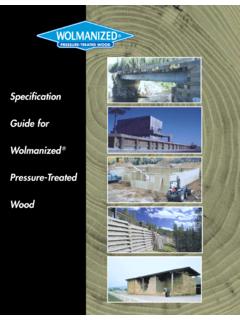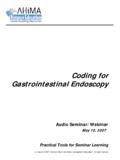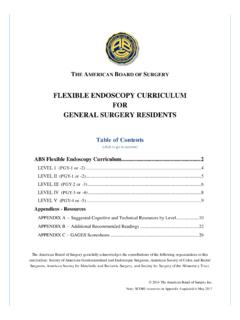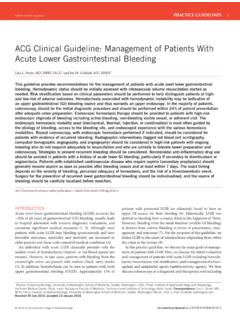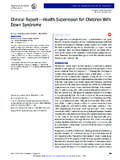Transcription of Material Safety Data Sheet - American Pole & Timber
1 Material Safety data Sheet Material Name: ACQ Preserve and Preserve Plus Pressure Treated Wood ID: CSI-068 _____ Page 1 of 8 Issue Date: 05/30/06 Revision: Print Date: 5/30/2006 * * * Section 1 - Chemical Product and Company Identification * * * Chemical Name: Pressure treated wood with Alkaline Copper and Quaternary Ammonium Compounds Product Use: Lumber Manufacturer Information General Comments NOTE: Emergency telephone numbers are to be used only in the event of chemical emergencies involving a spill, leak, fire, exposure, or accident involving chemicals. All non-emergency questions should be directed to customer service. * * * Section 2 - Composition / Information on Ingredients * * * CAS # Component Percent Not Available Wood/Wood Dust 141-43-5 Monoethanolamine Proprietary Copper complex expressed as Copper oxides 10043-35-3 Boric acid 68391-01-5 Alkyl dimethyl benzyl ammonium chloride** 7173-51-5 Didecyl dimethyl ammonium chloride** Proprietary Dialkyl dimethyl ammonium carbonate/bicarbonate** Component Related Regulatory Information This product may be regulated, have exposure limits or other information identified as the following: Wood dust, all soft and hard woods, Wood dusts-soft woods, Wood dusts-hard wood, Copper compounds, , Copper.
2 Component Information/Information on Non-Hazardous Components ACQ Preserve Pressure Treated Wood products are made up of wood treated with one of the ACQ family of EPA registered products. **Note: This product contains either/or of the above Quaternary ammonium compounds depending which ACQ Wood Preservative is used. This product is considered hazardous under the criteria specified in 29 CFR (Hazard Communication Standard) and the Canadian Workplace Hazardous Materials Information System (WHMIS). * * * Section 3 - Hazards Identification * * * Emergency Overview WARNING ! Wood dust may form explosive mixture with air. Wood dusts may cause irritation to the eyes, skin and respiratory tract. Potential Health Effects: Eyes Wood dust may cause irritation to the eyes. Symptoms can include irritation, redness, scratching of the cornea, and tearing. Potential Health Effects: Skin Wood dust may cause irritation to the skin.
3 Mechanical rubbing may increase skin irritation. Some wood species may cause dermatitis or allergic skin reactions in sensitized individuals. Potential Health Effects: Ingestion Ingestion of wood or wood dust is unlikely. If ingestion does occur, slight gastrointestinal irritation may result. Certain species of wood and their dusts may contain natural toxins which can have adverse effects in humans. Material Safety data Sheet Material Name: ACQ Preserve and Preserve Plus Pressure Treated Wood ID: CSI-068 _____ Page 2 of 8 Issue Date: 05/30/06 Revision: Print Date: 5/30/2006 Potential Health Effects: Inhalation Wood dust is irritating to the nose, throat and lungs. Symptoms may include nasal dryness, deposits or obstructions in the nasal passages, coughing, sneezing, dryness and soreness of throat and sinuses, hoarseness, and wheezing. Prolonged or repeated inhalation of wood dusts may cause respiratory irritation, recurrent bronchitis and prolonged colds.
4 Some species may cause allergic respiratory reactions with asthma-like symptoms in sensitized individuals. Prolonged exposure to wood dust by inhalation has been reported to be associated with nasal and paranasal cancer. Medical Conditions Aggravated by Exposure Pre-existing eye, respiratory system and skin conditions. HMIS Ratings: Health: 1* Fire: 1 Physical Hazard: 0 Hazard Scale: 0 = Minimal 1 = Slight 2 = Moderate 3 = Serious 4 = Severe * = Chronic hazard * * * Section 4 - First Aid Measures * * * First Aid: Eyes Immediately flush eyes with plenty of water for at least 15 minutes. Seek immediate medical attention. First Aid: Skin For skin contact, wash immediately with soap and water. Continue flushing skin with water for 15 minutes. If irritation persists, get medical attention. If wood splinters are injected under the skin, get medical attention immediately. First Aid: Ingestion If the Material is swallowed, get immediate medical attention or advice -- Do not induce vomiting.
5 First Aid: Inhalation If dusts are inhaled, remove person to fresh air. If symptoms persist, get medical attention. First Aid: Notes to Physician Respiratory ailments and pre-existing skin conditions may be aggravated by exposure to wood dust. * * * Section 5 - Fire Fighting Measures * * * Flash Point: Not applicable Method Used: Not available Upper Flammable Limit (UFL): Not available Lower Flammable Limit (LFL): Not available Auto Ignition: Not available Flammability Classification: Flammable Rate of Burning: Not available General Fire Hazards Wood is combustible and dusts may form explosive mixtures with air in the presence of an ignition source. Hazardous Combustion Products Combustion products may yield irritating and toxic fumes and gases including organic chloride, aldehydes, amines, hydrogen chloride, ammonia, copper compounds, oxygen, boric oxide, oxides of carbon and nitrogen. Extinguishing Media Use water to wet down wood and to reduce the likelihood of ignition or dispersion of dust into the air.
6 Fire Fighting Equipment/Instructions Firefighters should wear full protective clothing including self contained breathing apparatus. NFPA Ratings: Health: 1 Fire: 1 Reactivity: 0 Hazard Scale: 0 = Minimal 1 = Slight 2 = Moderate 3 = Serious 4 = Severe * * * Section 6 - Accidental Release Measures * * * Containment Procedures No containment procedures are needed, as this product cannot spill or leak the preservative. Keep away from sparks and flame. Clean-Up Procedures Wear appropriate protective equipment and clothing during clean-up. Wet down accumulated dusts prior to sweeping or vacuuming in order to prevent explosion hazards. Sweep up or vacuum small pieces and dusts and place in appropriate container for disposal. Gather larger pieces by an appropriate method. Avoid the generation of airborne dusts during clean-up. Do not inhale dusts during cleanup. Material Safety data Sheet Material Name: ACQ Preserve and Preserve Plus Pressure Treated Wood ID: CSI-068 _____ Page 3 of 8 Issue Date: 05/30/06 Revision: Print Date: 5/30/2006 Evacuation Procedures Isolate area.
7 Keep unnecessary personnel away. Special Procedures Wear appropriate personal protective equipment. Follow all Local, State, Federal and Provincial regulations for disposal. * * * Section 7 - Handling and Storage * * * Handling Procedures Do not generate airborne dusts in the presence of an ignition source when sawing, cutting or grinding wood. Wash hands after handling and before eating. Avoid contact of wood dusts with skin and eyes. Do not breathe wood dusts. Do not eat, drink or smoke when handling this Material or in areas where dusts of this product are present. Storage Procedures Maintain good housekeeping procedures, such as sweeping regularly to avoid accumulation of dusts. Store product in a dry area away from excessive heat, sparks and open flame. * * * Section 8 - Exposure Controls / Personal Protection * * * Exposure Guidelines A: General Product Information Follow all applicable exposure limits.
8 B: Component Exposure Limits Wood/Wood Dust (Not Available) ACGIH: 5 mg/m3 TWA (related to Wood dust (soft wood)) 10 mg/m3 STEL (related to Wood dust (soft wood)) OSHA Vacated: 5 mg/m3 TWA (related to Wood dust, all soft and hard woods, except western red cedar) 10 mg/m3 STEL (related to Wood dust, all soft and hard woods, except western red cedar) NIOSH: 1 mg/m3 TWA (related to Wood dust) Monoethanolamine (141-43-5) ACGIH: 3 ppm TWA 6 ppm STEL OSHA Vacated: 3 ppm TWA; 8 mg/m3 TWA 6 ppm STEL; 15 mg/m3 STEL OSHA Final: 3 ppm TWA; 6 mg/m3 TWA NIOSH: 3 ppm TWA; 8 mg/m3 TWA 6 ppm STEL; 15 mg/m3 STEL Copper complex expressed as Copper oxides (Proprietary) ACGIH: mg/m3 TWA (fume); 1 mg/m3 TWA (dusts and mists, as Cu) (related to Copper) OSHA Vacated: mg/m3 TWA (fume, dusts, mists as Cu) (related to Copper) OSHA Final: mg/m3 TWA (fume); 1 mg/m3 TWA (dusts and mists) (related to Copper) NIOSH: 1 mg/m3 TWA (as Cu except Copper fume) (related to Copper compounds) Engineering Controls Use exhaust ventilation when cutting, grinding or sanding in enclosed areas and if it is anticipated the exposure limits for wood dust may be exceeded during working with this product.
9 PERSONAL PROTECTIVE EQUIPMENT Personal Protective Equipment: Eyes/Face Wear Safety glasses with side shields when handling, cutting, sanding or grinding this Material . Use a face shield during processes that may generate excessive dusts and splinters. Personal Protective Equipment: Skin Wear puncture resistant work gloves, such as leather. Personal Protective Equipment: Respiratory Not normally needed. Use a dust mask for particulate concentrations exceeding the Occupational Exposure Limit. Material Safety data Sheet Material Name: ACQ Preserve and Preserve Plus Pressure Treated Wood ID: CSI-068 _____ Page 4 of 8 Issue Date: 05/30/06 Revision: Print Date: 5/30/2006 Personal Protective Equipment: General Launder workclothes frequently. Eye wash fountain is recommended. * * * Section 9 - Physical & Chemical Properties * * * Appearance: May vary Odor: Ammonia/Wood Odor Physical State: Solid wood pH: Not applicable Vapor Pressure: Not available Vapor Density: Not applicable Boiling Point: Not applicable Melting Point: Not applicable Solubility (H2O): Insoluble Specific Gravity: Not available * * * Section 10 - Chemical Stability & Reactivity Information * * * Chemical Stability This is a stable Material .
10 Chemical Stability: Conditions to Avoid Keep away from excessive heat, sparks and open flame. Keep away from incompatible materials. Incompatibility Strong acids, alkalies and oxidizing agents. Hazardous Decomposition Combustion products may yield irritating and toxic fumes and gases including organic chloride, aldehydes, amines, hydrogen chloride, ammonia, copper compounds, oxygen, boric oxide, oxides of carbon and nitrogen. Hazardous Polymerization Will not occur. * * * Section 11 - Toxicological Information * * * Acute and Chronic Toxicity A: General Product Information Wood dusts may be irritating to the eyes, skin and respiratory tract. Prolonged or repeated inhalation of wood dust may cause respiratory irritation, recurrent bronchitis and prolonged colds. Depending on the species of wood, recurrent exposure may cause allergic skin and respiratory reactions in some individuals. Inhalation of high concentrations of Monoethanolamine have been reported to cause pulmonary, liver, kidney and skin damage in experimental animals.



